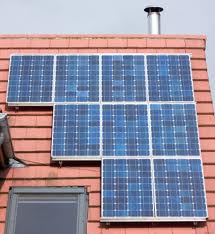With solar panel prices dropping it seems almost every month you would think that roof tops throughout the world would be covered with them. But that’s not the case. In my neighbourhood of hundreds of homes here in Toronto one house has solar panels. It seems that what I observe here is not too dissimilar to other urban residential areas in North America.
U.S. statistics from 2010 and 2011 show that residential solar is growing but not nearly at a pace to displace the more traditional energy sources – oil and natural gas. In fact residential solar decreased as a total percentage of photovoltaic system installations in the U.S. from 2009 to 2010, from 36 to 30%. Instead the growth has come from the non-residential market.

Why is this happening?
- Subsidies to encourage residential solar are coming to an end in European and North American countries. Where subsidies remain residential solar panel sales continue to grow.
- Solar installation costs remain high. Do-it-yourself solar kits from U.S. big box hardware stores start as low as $2,500 for a solar water heater to over $10,000 not including installation for a off-the-grid photovoltaic system with battery storage.
- Connecting photovoltaic systems to the power grid to take advantage of feed-in-tariffs to offset the cost of installation has proven to be problematic. Residential solar installers report backlogs of a year or more before homes get hooked up to the main grid. This makes residential solar even with subsidies and tax incentives less attractive.
- Falling prices for photovoltaic panels has put financial pressure on the manufacturers and installers of solar. Instead of more businesses getting into the game, many are pulling out. Recently the selling price for photovoltaic modules dropped from 95 cents per watt to 80 cents. This followed a year in which prices dropped by 50%. For many manufacturers this has wiped out their profits. For installers holding inventory it means to stay competitive they have to sell below cost and try and make it up in services.
- A third-party ownership model where a utility provider or supplier takes the headache out of installing solar on residential roofs in return for doing the installation and maintenance for a monthly fee has yet to take off as a business model although there are some early players trying to do this.
In North America today, natural gas remains the primary energy supplier to residential homes. And with natural gas prices stable or falling, and supply growing, the day when solar energy becomes ubiquitous seems far in the future of the 21st century.
















Len, some good points, let me add a few others. I was just at the Green Living show on the weekend so got some recent first hand info.
1 – The main marketing problem is that if vendors only set up at ‘green’ shows, they are just preaching to the choir. They need to find messages and venues that appeal to green agnostics.
2 – the falling price trend plays into another reality, the relatively long payback period. It might be interesting to do the math, but if I commit to an installation today it locks me into a payback period of X months. But if I wait and prices fall more, my payback period could be even shorter than X months, so there is an inherent motivation to wait until prices bottom out. One thing that vendors might want to do is model how much of the total price is actually influenced by the unit price of panels – if it’s less than 50%, for example, the falling price effect is diluted by a 2:1 factor and so could become less relevant to overall payback than the marketplace understands.
3 – The long payback period has another impact: many if not most homeowners will move before the investment breaks even. I have not seen a way that you can recover the value of the future tariff-based revenue when you move to avoid a net loss. My real estate agent friends tell me the last thing you want is some complication when you’re trying to sell, such as a side deal to compensate for the residual revenue. Until and unless this is solved, many potential buyers will just get stuck in a wait and see loop until the clock basically runs out and they know with certainty they won’t see the payback.
To me the utility model may resolve so many of these issues. If a utility provider, let’s say someone licensed by Toronto Hydro, or Toronto Hydro itself, installs and maintains solar panels on my roof at no charge in a revenue sharing model then homeowners no longer have to calculate when they will reach break even. The panels will feed in to the grid excess energy over and above that needed for residential use. And the homeowner will pay a monthly maintenance fee.
For utilities this has considerable attractiveness. One of their concerns is residential going off the grid and the revenue implications should this become a trend. So building solar capacity using residential and commercial roof tops becomes an attractive way to build a new customer relationship model.
The early adopters are starting in the U.S. We will see if this business model will develop legs for the long term.